In my previous article, we looked at the three most common alternative therapies for horses: acupuncture, chiropractic and equine sports massage. Here we look at two more very different types of treatments, Equine Reiki and Equine Hydrotherapy, what they are, and how they could benefit your horse.
Equine Reiki
What is Reiki?
Reiki originated in Japan over 2000 years ago. It means “universal life energy” in Japanese. It is a holistic method of energy healing and can be used for the treatment of physical, emotional and mental conditions.
While it is used mainly on humans, it is fast becoming a highly recommended and useful alternative therapy for horses, complementing traditional veterinary care and treatment.
Equine reiki is a treatment carried out by using specific hand positions, transferring healing energy to certain energy points in the body, known as chakras. It is a gentle and non-intrusive therapy and is very safe to use.
When to use Equine Reiki
When a horse is healthy, his energy flows through his body like an electric current. When a chakra becomes blocked, it interferes with that flow. A variety of reasons can cause these blockages such as injuries, illness, trauma, training issues, emotional problems and dietary changes.
When there is an imbalance in the horse’s energy, he shows signs of pain, stress, anxiety, listlessness, or too much energy, along with problems in behavior.
Horses are very sensitive and react much more quickly than humans do to the Reiki energy, thus, they respond very effectively to treatment.
The benefits of Reiki for your horse are:
- Health – Reiki can help keep your horse healthy, speed up the healing process for illnesses and injuries and even helps when your horse is dying, making the transition between life and death a peaceful one.
- Emotional Problems – When a horse has suffered from abuse, neglect or a major accident, Reiki helps to release and heal those emotions.
- Behavioural Issues – Reiki can contribute to reducing stress and anxiety levels with horses that are nervous or have stable or ridden vices.
- Improves movement – Reiki can assist in improving the horse’s suppleness and enhance the action of the gaits.
Horses often mirror the emotions of their owner. It is, therefore, a good idea for both horse and owner to have Reiki sessions together, building a better relationship and partnership.
Who should carry out Reiki?
Many holistic veterinarians use Reiki to help their patients. You can also find a Reiki Equine Practitioner in your area. Level Three, Equine Master, is the highest qualification.
Practitioners are not regulated or licensed. It is a useful skill that you can also learn yourself either by attending training classes or completing a home study course. Always remember, though, that Equine Reiki is not a replacement for traditional veterinary treatment.
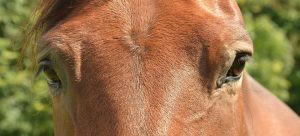
A calm horse is best for reiki therapy.
Reiki should always be carried out on the horse in a peaceful and quiet environment. It is different from other therapies as it relies on the horse being a willing partner if it is to be successful.
The practitioner will always “offer” Reiki to the horse before commencing treatment. Horses will often offer the parts of their bodies that need healing.
Treatment consists of applying the hands on or above each chakra for 5 to 10 minutes. Sometimes the horse will decide that the treatment for that area is finished by moving away and then return for more a few moments later.
When the horse is happy with the treatment, you will see him relax and look sleepy. A session usually takes between 30 and 60 minutes or when the horse moves away, indicating he has had enough.
Results tend to be noticeable after about three sessions.
Equine Hydrotherapy
What is equine hydrotherapy?
Water has long been used on horses for centuries due to its multitude of healing properties.
Cold sea water especially, due to the high amounts of salt content, has an anti-inflammatory effect which enhances healing and protects against injury. Three time Grand National Winner, Red Rum, who had a lingering foot problem, regularly benefited from training on the beach.
Equine Hydrotherapy, therefore, is the appliance of water to promote healing following an injury and can also aid and maintain the fitness of the horse.
Types used include:
- Cold hosing
- Swimming
- Water treadmills
- Equine spas
When to use equine hydrotherapy
Equine hydrotherapy benefits many injuries and ailments in horses which include:
- Tendon injuries
- Ligament damage
- Concussion
- Sore shins
- Fractures and splints
- Infection of legs
- Bruising
- Swellings
- Desmitis
- Arthritis
- Hoof injuries
- Open wounds and skin infections
- Windgall
- Laminitis
- Stiffness and soreness
- Post-race/competition strain
Cold hosing
One of the oldest methods used, cold hosing is a very basic form of equine hydrotherapy treatment but it is one of the effective methods.
When a horse acquires an injury, cold hosing the afflicted area tends to draw heat out of the tissues and reduces increased blood flow, swelling, and bleeding. It also offers a temporary pain relief. The hose can be used on any part of the horse’s body since it is long and mobile.
You should allow the water to run over the injured point for twenty minutes. This should be the first course of action if your horse obtains an injury from a kick, cut, bump or bruise. How often you continue to cold hose depends on the injury and the advice of your veterinarian.
Swimming
Swimming involves using all parts of the body without putting pressure on the back or the limbs and is an excellent form of exercise, improving the strength of the cardiovascular system.
Other benefits include:
- Treatment for horses with tendon, ligament and joint injuries
- Improved respiration
- Improved circulation
- Increased flexibility of the horse’s range of movement
- Improved balance of horse teaching them to swim in a straight line
- Does not cause concussion to limbs
- Is a change to horses as part of their training program
However, despite the advantages, there are times when a horse shouldn’t swim. Too much swimming can cause sore backs and problems in stifle area due to the way the horse carries itself i.e. head raised and back hollow. These times include:
- Horses with stifle or hock injuries should not swim because movement of the joints in water could cause further damage
- If your horse has a skin conditions
- Horses that have respiratory conditions or are heavy bleeders should not swim
Water treadmill
Water treadmills provide less risk to a horse than swimming does, as they provide a variation of both the water height and speed. They are, therefore, much more adaptable for different injuries, including horses with back or stifle issues. Horses with open wounds or stitches, shouldn’t use them.
A horse is worked on a water treadmill in walk or trot, providing an excellent cardiovascular workout, building up muscle without imposing stress on the feet and legs. The water treadmill also helps the horse to drive with his back end, encouraging the horse to take a longer stride than when working on land, making the hind-quarters stronger.
Equine Spa
The equine spa combines the two effects of seawater and cold hosing by maintaining a low temperature of between 2°and 4°C (35°and 40°F) with a high amount of salt.
The cold temperature helps to reduce heat and inflammation of the legs, with water levels varied depending on the type of injury.
The salt water assists in drawing out infections, speeding up the healing process.
The spa is ideal for injuries to:
- Tendons
- Ligaments
- Hooves
- Wounds
- Cuts
- Bruises
Horses suffering from conditions such as arthritis and laminitis can also benefit from spa treatment as well as a prevention against stiffness and lameness in competition or race horses when used regularly.
Jacuzzi jets can also be added for use around the joints, acting as a massage and reducing swelling and puffiness.
Other Alternative Therapies
As you can see, there are many different forms of therapy that can be used to give your horse a longer, healthier, more comfortable life. Remember to always consult with your vet before performing any of therapies as there are dangers that must be avoided.
Make sure to read my other article on alternative therapies for horses which discusses the possibilities of acupuncture, sports massage, and chiropractic care.
Alison O’Callaghan, our Equine Editor, is a professional horse riding instructor and has owned many types of pets. When she is not riding horses or walking her dog, she loves to write about animals. If you’d like to contact Alison, you can email her at ocallaghan462@gmail.com.

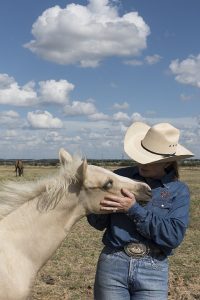
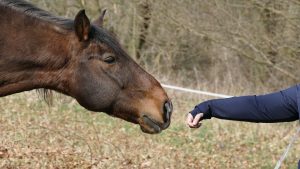

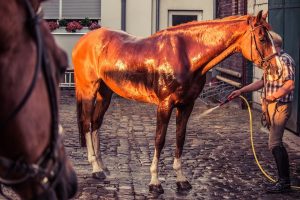
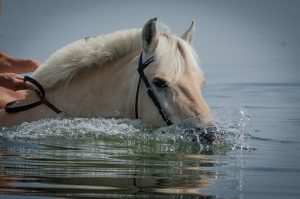

Pingback: Caring For The Older Horse